Water is a source of health |
|
But the question is: without what water? Perhaps only Dr. Bombar managed to hold out at sea for about a month and a half. And as the experiments of scientists and the sad statistics of shipwrecks show, although there is plenty of water in the seas and oceans, a person still dies in the sea even if there is food on the 5-7th day. After all, sea water, due to the presence of a large amount of salts in it, is not drinkable. By the way, Bombar did not even try to prove that a person can exist for a long time without water. His task, as he himself said, was to show that enough fresh water can be found in the open ocean to hold out for a long time until help arrives. And by his travels, the doctor brilliantly proved that in most accidents in the ocean, it is not so much a lack of food and drink that is to blame, but a lack of knowledge and fear.
This situation is explained quite simply. Indeed, the human body contains a fairly large number of readily soluble compounds. First of all, these are minerals - sodium chloride, potassium chloride, calcium salts, etc. They are found in blood, muscles, plasma, etc. When distilled water passes through gastrointestinal tract, it is enriched with soluble substances present in the body and, first of all, with minerals. Leaving the body (excreted in urine or sweat), such enriched (compared to the original) water carries away some of the salts from it. And their lack, naturally, is extremely difficult for a number of physiological functions of the body. As shown by special experiments, the complete exclusion of potassium from the liquid passed through the heart in experimental animals leads to cardiac arrest. A decrease in calcium in the blood causes an increase in the excitability of the neuromuscular system, etc. Thus, not all water is useful for the body. Especially for drinking. What kind of water is there?
Water is a good solvent, especially for inorganic compounds. It washes away soluble compounds from soil, rocks and minerals, and its "mineral reserve" increases. Already salts of sodium and potassium, magnesium, calcium, iron. As it seeps through various cracks in the ground, water gets (or, in any case, can get) into areas of the earth's crust where high temperatures prevail. Its temperature also rises, and with this, the dissolving power rises. The salt content in water is steadily increasing. It can also get to places where there are accumulations of various gases such as carbon dioxide or hydrogen sulfide. In this case, these gases are also dissolved in water.
It is impossible to say when a person became acquainted with water. He had always known her. But the "development of water", that is, the use of it for their own needs, especially for navigation and fishing, of course, did not happen immediately. Man and sea
The powerful self, the powerful tribe, has offended the heavenly deity. Of course, the deity decided to roughly punish the proud and sent cruel punishment to the tribe. Of the entire tribe, only one little boy survived. But his share did not deserve any joy. After all, other tribes, in whose eyes a tragedy occurred, did not dare to accept a renegade, whose fellow tribesmen suffered such a cruel fate. And then the boy, because he was denied mercy by the gods, and the shelter - by people, turned to the compassion of animals. But even here, at first, he was pursued by failures. Only a wild duck, whose nest, woven of bamboo, was on the river bank, showed him hospitality. The boy is tired, weak. He climbed there and instantly fell asleep. And at night, the river, outraged by the cruelty of people, carried the nest far from the places where the tragedy occurred. The boy's bed, swaying quietly, floated under the dense crowns of trees, which, as it were, formed a kind of tunnel over the calm and strong river. And by morning the river brought the nest out to sea. When the boy woke up, it seemed to him that he was in paradise for orphans: his new home floated across the blue-blue sky, where strange and strange white-maned creatures played merrily with each other. After all, the boy had never seen the sea. Gentle breezes pushed his nest further and further across the vast blue expanse, and around something softly and softly whispered, as if it were his mother singing her lullabies to him. The boy often fell asleep, and when he woke up, he invariably saw the endless blue space around him and heard the gentle whisper of the sea. And while he was swimming, his heart grew mature and his muscles grew.
Each nation has its own legends about the conquest of the sea. But, perhaps, there is no such people who would not identify the angry sea element with a deity. This deity was worshiped, sacrifices were made to him.So, for example, the custom was born to throw slices of bread into the sea and pour out wine to appease the sovereign of the sea. Some peoples coated the cliffs with oatmeal before sailing to distant lands, so that the gods were satisfied and did not break ships. In Norway, for example, there was a custom to give a piece of cake to sea and water spirits. The great merit of seafarers in the knowledge of the planet is indisputable. It was thanks to them that new continents and peoples were discovered. New crafts developed. And now the sea is an inexhaustible source of many useful things for humans. First of all, these are fish stocks. But the sea is also a kind of mineral deposit. Now scientists believe that all elements of the periodic table of elements can be found in any mineral; another thing is that the numbers of many of them are vanishingly small. This provision can be fully attributed to sea water. The huge amounts of salts present in it contain a wide variety of elements, up to radioactive ones. Swimming in sea waterThe sea is not only a source of raw materials and energy, but also a powerful healing factor. Even in ancient times, sea air, sun and sea water were widely used for medicinal and preventive purposes.
First of all, sea water (unlike river water) has a higher density due to the significant amount of salts dissolved in it. So, for example, a kilogram of the Black Sea water contains up to 18 grams of dissolved salts, in the Mediterranean there are even more of them - up to 38 grams. First of all, it is sodium chloride, which accounts for about 80%. Then there are magnesium and potassium salts. In addition, in small amounts, seawater contains elements such as calcium, sulfur, bromine, iodine, etc. All these salts play a very specific physiological role in the process of contact of the human body with seawater. A crude analogy can be drawn here. Scientists have found that, for example, plants can be fertilized by foliar method. So, if there is a lack of phosphorus in the soil, then it can be applied not only to the soil, but also directly to the plant, spraying its leaves with a solution of any suitable readily soluble phosphorus salt. Roughly the same thing happens with the animal organism. When swimming in the sea, the body seems to "inscribe" the necessary trace elements, besides this, on the air seashore and over the sea itself, especially with more or less strong sea waves, it is highly saturated with sea salts, including those that contain iodine and bromine. therefore thalassotherapy in its effects it is comparable to the treatment with mineral waters - only here patients "drink" mineralized air. Naturally, this is especially useful for chronic respiratory diseases. Such treatment is especially effective when taking sea baths. Indeed, at a distance of about 20 centimeters above sea level, the sea air is extremely clean - it practically does not contain any dust or any bacteria. Therefore, the coastal strip can be considered as a natural inhaler. But, of course, it would be wrong to consider the influence of the sea on the body as a purely physiological phenomenon. No less important is the mechanical effect and temperature, or rather, the combination of all these factors. Sea bathing acts on the human body as a strong stimulating and hardening factor. Their actions largely depend on the temperature of the water and the movement of sea waves. The temperature effect of water primarily affects the fact that when entering it, a person feels a slight chill.This is due to the fact that there are rapid spasms of blood vessels located in the upper layers of the skin. In this case, the vessels inside the body expand and the blood enters the internal organs. All this leads to the excitation of the nervous system. The muscles in the body contract and breathing becomes deep and rapid. This, of course, greatly enhances gas exchange (that is, the absorption of oxygen and the release of carbon dioxide) and blood circulation. After being in the water for a while, the body reacts. The blood vessels of the skin expand, more blood begins to flow to them, and the skin turns red. The muscles gradually relax, the blood pressure drops somewhat, and the person feels warm. A similar picture is observed after a person's immediate exit from the water ashore. It is the creation of such cycles associated with vascular spasms and excitation of the nervous system that is the main goal of sea bathing. They lead to hardening, strengthening of the whole organism as a whole, and of its individual organs, blood vessels, muscles.
The famous Russian poet N.M. Yazykov conveys the effect of sea bathing very subtly and precisely in his poem:
It is generally accepted that the sea is good to swim when it is calm. However, sea waves are very important for hardening the body. After all, it is at this time that sea foam appears, rich in air bubbles, and the body receives a kind of water-air massage. In addition, a purely mechanical periodic effect of hydrostatic pressure on the body is a kind of massage that cannot be performed in any other way. Bathing in the sea improves the state of the nervous system, strengthens the functions of the endocrine glands. In addition, they train the cardiovascular system and normalize blood pressure. Along with this, swimming in the sea has a beneficial effect on a number of diseases: metabolic disorders, gout, obesity, neurasthenia, with tuberculosis of the lungs and other organs in an inactive form, with rickets. Of course abuse sea bathing do not do it. So, for example, depending on the state of the body, the duration of bathing should not exceed 10-20 minutes. In addition, bathing on an empty stomach or after a large meal is not recommended. There are also contraindications for sea bathing, such as active pulmonary tuberculosis, acute inflammatory processes, diseases of the heart and blood vessels. They are also not recommended for Graves' disease, increased nervous and mental excitability. This is due to the fact that the heart and nervous system are subjected to increased stress, which can adversely affect health. Bathing in mineral water
Remember the tale of living water? The old father sends his sons to bring him water that will restore his youth and health. It is precisely Narzan that is credited with local legends and tales of the ability to quickly heal wounds, instill vigor, and restore youth and health to the elderly. And the word "narzan" in translation into Russian means "heroic drink". In this regard, it is interesting to recall the ancient Greek myth of Hercules and Prometheus. Zeus, the lord of the gods, for the fact that Prometheus gave people fire, ordered him to be chained to the mountain. But this almighty Zeus (it seemed not enough. He (ordered the huge eagle every day to fly to Prometheus and peck at his liver. During the night the liver grew, and the next day the eagle flew again. For many years Prometheus was chained to the rocks, and only the intervention of Hercules, who boldly entered into a fight with the eagle of Zeus, put an end to the torment of the unfortunate titan, who once decided to help people.It is interesting for us here that the ancient Greek myth tells that Hercules, before entering the fight with the eagle, was gaining strength, bathing in the bogatyr spring of the Caucasus.This once again testifies that the mineral springs of the Caucasus were known to people in ancient times. The first descriptions of the sources indicate that they were treated with great respect. Not only do they find various sacrifices in ancient sources - amulets, coins, figurines of various deities, etc. The sources tried to protect them from evil spirits, to somehow improve them. For example, in one of the descriptions it is said that at the source there was a strong oak table under a canopy, on which there was a silver ladle, as a symbol of honor and respect for the source. Balneological waters (that is, medicinal mineral waters that are used both for ingestion and for baths) are currently divided into seven groups. Group "A" includes mineral waters without any specific components and properties. Their medicinal value is determined only by the general mineralization (the amount of salts dissolved in them), as well as the chemical nature of the salts. Group "B" - the so-called carbonic waters, which are distinguished by a large amount of carbon dioxide dissolved in them. An example of them are the mineral waters Borjomi, Narzan, Essentuki and a number of others. Carbon dioxide in the total gas composition of such waters is 95-100%. Sulfide mineral waters, which make up the group "B", are characterized by the presence of an increased amount of hydrogen sulfide or hydrogen sulfide ion. These chemicals have great pharmacological activity, and therefore the waters of the "B" group are used mainly for baths. Mineral springs of such waters are located in Kemeri, Matsesta and a number of other regions. The next group "D" includes ferrous, arsenic and other mineral waters with a high content of metals, such as manganese, copper, aluminum. And although the medicinal value of some metals has not yet been fully studied, it is precisely in the influence of one or several pharmacologically active metals that their medicinal effect lies. Group "D" combines mineral waters with a high content of organic substances, as well as containing physiologically active substances such as iodine and bromine. Sources of such waters are located in Ukraine and the Baltics. Waters containing radon (or other radioactive substances) are included in group "E". The last group - "Zh" - is mineral waters with a high content of silicic acid. Since almost all mineral waters contain dissolved gases to one degree or another, the groups listed above are usually subdivided into three more subgroups in accordance with the nature of their gas composition. In particular, the first subgroup includes the so-called nitrogen mineral waters, in which the dissolved gas is of atmospheric origin and the same composition.The second subgroup includes methane waters containing gases, mainly of biochemical origin. There is another classification of natural mineral springs. However, a detailed review of the classification and properties of all mineral waters is not the task of this book. Therefore, we would like to briefly dwell on the most important of them and show how certain waters can be useful to humans in the treatment or prevention of various diseases. The most widespread in our country are carbonic (group "B", subgroup 3) mineral waters - narzan, borjomi, etc. These waters are used both for taking baths and for drinking. And here, in both cases, they have a peculiar physical and chemical effect. The physical and mechanical effects of carbonic water are somewhat similar to those of seawater. However, there is a slight difference here: if, when swimming in the sea, a person is usually in motion, performs some kind of physical work (swims, dives, etc.), then when taking carbon dioxide baths, the human body is at rest. This, of course, to some extent affects the effect (in particular, mechanical) of baths on the human body. So, for example, when immersed in a bath, it becomes necessary to maintain balance. A slight pressure of water on the body promotes the outflow of venous blood from the periphery and facilitates the work of the heart.
Carbonic waters contain a lot of free carbon dioxide - CO2. So, for example, when a liter of mineral carbon dioxide comes out to the surface, it emits from 1 to 3 liters of carbon dioxide. And as you know, carbon dioxide is quite well soluble in water, especially at elevated pressures. At the same time, its properties change radically. When interacting with water, it forms a weak carbonic acid. Although carbonic acid is weak, it can form various salts. Moreover, its salts, especially calcium salt, have very interesting properties. Everyone, of course, knows calcium carbonate - this is chalk, limestone, marble. And, of course, everyone knows that calcium carbonate is insoluble in water. But as soon as an excess of carbonic acid appears, calcium carbonate is converted into calcium bicarbonate, and this salt is quite soluble in water. At elevated temperatures and a large excess of carbon dioxide, many metals have the property of forming soluble bicarbonate salts. That is why carbonic waters (usually containing large amounts of salts of other acids) contain many elements in their composition. Their main components are sodium, calcium, magnesium, chloride ions, sulfate, bicarbonate. Ions of ammonium, lithium, strontium, barium, iron, zinc, nickel, copper, aluminum, arsenic, bromine, iodine are often found as various trace impurities. Almost all elements of the periodic system can be found in mineral waters, although in very small quantities. All of them are in a state of complex mobile equilibrium, and their ratios depend on factors such as water temperature, acidity, etc. It is interesting to note here that a number of microelements are included in the composition of substances vital for the body. So, for example, manganese, copper, molybdenum and some others are an integral part of enzymes. Iron is part of hemoglobin, and cobalt is an indispensable part of vitamin B12. We have already noted above that carbon dioxide baths are often used to increase the overall tone of the body. Balneologists have noticed an interesting feature for a long time: when taking carbon dioxide baths, reddening of the skin and acceleration of blood flow are observed. At present, these phenomena are explained by the fact that when such procedures are adopted, specific substances such as acetylcholine and histamine are formed in the body, the reflex effect of which on various organs and systems leads to the expansion of blood vessels.At the same time, due to a change in the gas composition of the blood and the presence of a slightly increased content of carbon dioxide in the inhaled air, breathing deepens, arterial and venous pressure changes. Along with this, the nutrition of the heart muscle improves. All this, taken together, leads to an improvement in the functional state of the cardiovascular system. Drinking mineral water inside
By varying the conditions for the intake of mineral water (on an empty stomach or with food), the quantity and its temperature, it is possible to influence the activity of the gastric glands in different ways. Therefore, alkaline carbonated mineral waters * are often used for the treatment and prevention of various gastric diseases. So, for example, they are indicated for increased and decreased acidity of gastric juice, for diseases of the gallbladder, pancreas, for stomach ulcers and colitis. For example, Borjom water is used in the treatment of not only diseases of the digestive tract, but also of the liver, biliary tract, etc. It is interesting that Borjom water is used to treat various forms of gastritis. In particular, not only gastritis with high acidity of gastric juice, but also with low acidity, more precisely, secretory insufficiency. At first glance, this may seem strange. In fact, if a person has an increased acidity of gastric juice, then, consequently, there is an excess of hydrochloric acid in it, and then it must be neutralized to a certain extent. Usually, so-called bicarbonate or baking soda serves as such a "neutralizer" at home. On the other hand, if the acidity of the gastric juice is lowered, then in such cases, doctors prescribe a weak solution of hydrochloric acid to the patient for oral administration. And as you know, hydrochloric acid and soda are substances that do not tolerate neighborhood. They instantly interact to form table salt and carbonic acid. How can one and the same mineral water be used for such different purposes? However, having carefully studied the mechanism of action of mineral water, in particular Borjomi, the doctors came to the conclusion that everything depends on the mode of taking mineral water. It was found that if Borjom water is taken 1-1 1/25 hours before meals (for example, on an empty stomach), then the water has time to leave the stomach during this time, while the secretory activity decreases and gastric juice is released weakly. If water is taken together with food sludge for 10-20 minutes before it, then the opposite phenomenon occurs secretory activity intensifies, and the amount of gastric juice entering the body increases. At the same time, as a result of a chemical reaction between soda, which is the main component of borjom water, and hydrochloric acid of gastric juice, carbon dioxide and sodium chloride are formed, which, in turn, are strong pathogens of the secretory apparatus of the stomach, I separate the gastric juice containing hydrochloric acid, rises even more.
Resorts with carbonated waters are very popular in our country. Especially those like Kislovodsk, Arzni, Borjomi. They can be recommended for cardiovascular diseases without joint damage, for respiratory diseases of a non-tuberculous nature (chronic catarrh of the upper respiratory tract, bronchial asthma without frequent attacks). In addition, the positive effect of carbon dioxide baths is noted with defects of the mitral and aortic valves, if there are no pronounced narrowing phenomena, as well as with mild forms of hypertension, hypo- and hyperthyroidism.Of course, as we have already noted, in case of any painful conditions, especially those expressed in more or less acute forms, before going to the resort, it is necessary to obtain a qualified medical consultation. The so-called hydrogen sulphide springs stand somewhat apart from other mineral waters. Such sources are found in our region of Matsesta. Matsesga waters, along with a high content of various salts (and primarily sodium chloride), contain a fairly significant amount of gaseous hydrogen sulfide. And although hydrogen sulfide itself, even in small concentrations, is a potent poison, its use in small quantities is very positive. As it was found out by balneologists, when taking hydrogen sulfide baths, not only the content of hydrogen sulfide in the water is of great importance, but also the temperature of the baths, their duration, etc. character, peripheral and central nervous system (neuralgia, radiculitis). Even at the beginning of our century, it was noted that when taking Matsesta baths, not only the smallest, but also larger blood vessels expand. And this, in turn, affects all organs associated with blood circulation. In particular, it is noted that hydrogen sulfide baths affect the contraction of the heart muscle, causing a "load-training effect". Hydrogen sulfide, penetrating into the blood, irritates tissue cells and enhances metabolism. According to one of the theories, under the action of hydrogen sulfide on cells, certain proteins are destroyed in them and biologically active substances are formed, such as histamine, acetylcholine, etc. In particular, histamine leads to vigorous expansion of blood vessels, and therefore to increased blood circulation which, in turn, promotes the resorption of various inflammatory foci. The products of the destruction of protein complexes, in addition, with further transformations, stimulate vitality, improve the nervous system, etc. Scientists have even figured out ways for hydrogen sulfide to enter the human body. It turned out that two "channels" are used here. On the one hand, these are the smallest pores in the skin, and on the other, the lungs when breathing. However, although hydrogen sulfide is poisonous, it does not accumulate in the body. On the very first day, all of its transformation products are excreted from the body, mainly through the kidneys and in small amounts through the lungs. Baths
The cradle of the baths is the Ancient East. In any case, it is known that the baths, as specially equipped for washing premises, existed several millennia ago in countries such as India and Egypt. Mentions about them are often found in the works of the ancient philosophers of Greece. Baths have existed in Russia since time immemorial. Gilyarovsky said well about their wide distribution: "Moscow without baths is not Moscow." The role of baths for the human body is twofold. They have both physiological and, “in particular, hygienic significance. Somewhat above, we have already talked about what functions the human skin performs. First of all, it is the function of regulating body temperature. And one of the most important methods of such regulation is perspiration. However, sweat is not distilled water. Along with sodium chloride, it contains various sulfuric and phosphate salts, as well as a whole range of organic substances. It contains various salts of organic acids (lactic, uric, etc.), cholesterol, fats, etc. Naturally, cleansing the skin of all these substances plays a huge hygienic role. The physiological significance of the baths is also closely related to the functional significance of the skin.First, the skin is one of the main reservoirs of blood, and therefore it is natural that the correct distribution of blood between the skin and internal organs of a person plays a significant role in his well-being. Incidentally, it is this distribution that is crucial in preventing colds. Thus, roughly speaking, baths are one of the medicines for the common cold. In addition, immediately after the bath, the amount of hemoglobin in a person's blood increases. Such a procedure as baths creates a cheerful mood in a person, increases his efficiency. Water procedures - sea and river bathing, various kinds of baths, showers, baths etc. - all these are powerful factors that enhance the hardening of the body, that is, an increase in its resistance to various. external influences. Vlasov L.G. |
| If hypoglycemia develops | Symptoms of people with latent depression |
|---|
New recipes
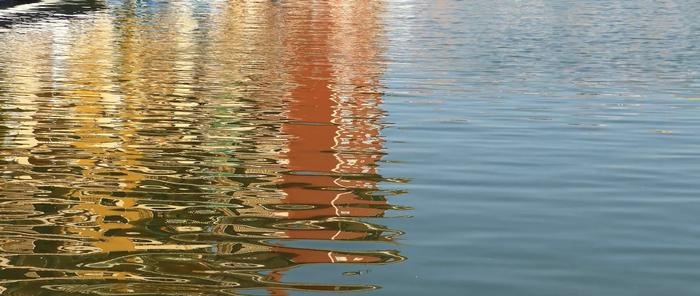 Water, according to scientists, is the cradle of all life on our planet. Neither man, nor animal, nor plant can exist without water.
Water, according to scientists, is the cradle of all life on our planet. Neither man, nor animal, nor plant can exist without water.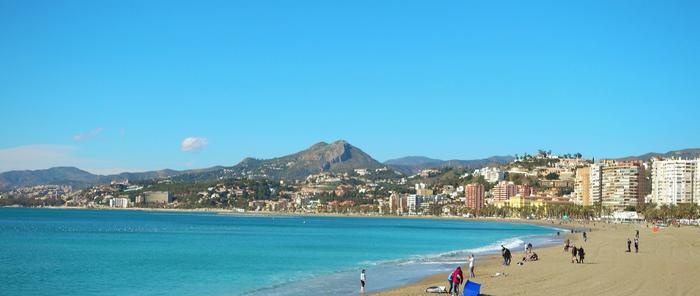 But absolutely pure, so-called distilled, or demineralized, water is also harmful to the body. Not only is it tasteless. The main trouble is that such water quite easily removes salts from the body, as a result of which serious illnesses can occur.
But absolutely pure, so-called distilled, or demineralized, water is also harmful to the body. Not only is it tasteless. The main trouble is that such water quite easily removes salts from the body, as a result of which serious illnesses can occur.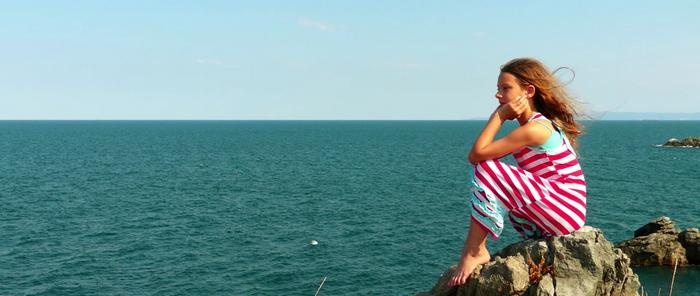 In general, what kind of water is there? It turns out that there are quite a lot of different waters on the globe. For example, rainwater. It is almost the same as distilled, it contains a minimum amount of salts. But then the rain fell on the ground, and along the sidewalks and pavements of the cities, across the fields, meadows and forests, merry streams ran, flowed, sometimes merging into muddy, stormy streams.
In general, what kind of water is there? It turns out that there are quite a lot of different waters on the globe. For example, rainwater. It is almost the same as distilled, it contains a minimum amount of salts. But then the rain fell on the ground, and along the sidewalks and pavements of the cities, across the fields, meadows and forests, merry streams ran, flowed, sometimes merging into muddy, stormy streams.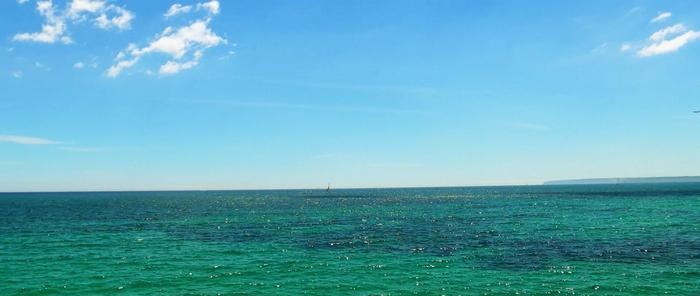 The further fate of water is varied.It can find a way out to the surface, and then such a source, containing a wide variety of salts and gases, and often heated to several tens of degrees, is called a "mineral spring". But it can also happen that our water breaks through a fontanelle at the bottom of a river. And it will flow to the distant sea, absorbing more and more streams along the way. During such a journey, the composition of the water changes greatly. Some of the salts precipitate, the gases evaporate, and ordinary "fresh", as it is usually called, water flows into the sea. But this fresh water still contains a considerable amount of salts. Under the influence of the sun and wind, the water in the sea evaporates and again in the form of clouds and clouds spreads across the globe. And salts accumulate in the ocean. That is why the seas and oceans have a high salt content. After all, they do not evaporate with water.
The further fate of water is varied.It can find a way out to the surface, and then such a source, containing a wide variety of salts and gases, and often heated to several tens of degrees, is called a "mineral spring". But it can also happen that our water breaks through a fontanelle at the bottom of a river. And it will flow to the distant sea, absorbing more and more streams along the way. During such a journey, the composition of the water changes greatly. Some of the salts precipitate, the gases evaporate, and ordinary "fresh", as it is usually called, water flows into the sea. But this fresh water still contains a considerable amount of salts. Under the influence of the sun and wind, the water in the sea evaporates and again in the form of clouds and clouds spreads across the globe. And salts accumulate in the ocean. That is why the seas and oceans have a high salt content. After all, they do not evaporate with water. There is a wonderful legend about how a person first got acquainted with the sea.
There is a wonderful legend about how a person first got acquainted with the sea.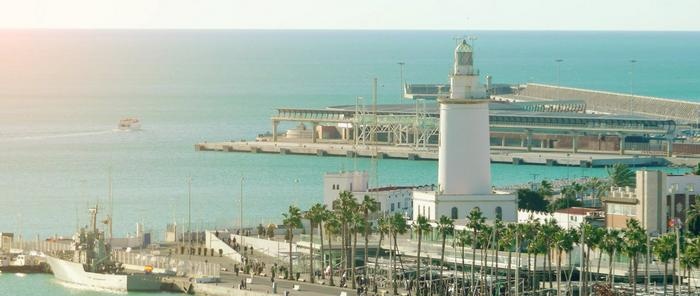 Once the sea decided to test it, and it was attacked by seven sea passions: fear, hunger, thirst, loneliness, self-pity, remorse and hope. But adversity and travel hardened the boy, and, overcoming the passions of the sea, he saw that the nest was approaching the shore. And although the land, to which his fate led him, was all covered with strange trees with juicy and ripe fruits, and its banks were of pure gold, he did not stay on it. Hope, the only temptation stronger than virtue, led the boy to a new voyage. For many years the boy wandered across the endless sea. He met many lands and islands on his way, but nowhere could he find peace. And then one day, in order to calm his melancholy and force him to rest, the sea turned the young man to stone, placing him as a sentry at the foot of the last cape on the threshold of the Great Ocean.
Once the sea decided to test it, and it was attacked by seven sea passions: fear, hunger, thirst, loneliness, self-pity, remorse and hope. But adversity and travel hardened the boy, and, overcoming the passions of the sea, he saw that the nest was approaching the shore. And although the land, to which his fate led him, was all covered with strange trees with juicy and ripe fruits, and its banks were of pure gold, he did not stay on it. Hope, the only temptation stronger than virtue, led the boy to a new voyage. For many years the boy wandered across the endless sea. He met many lands and islands on his way, but nowhere could he find peace. And then one day, in order to calm his melancholy and force him to rest, the sea turned the young man to stone, placing him as a sentry at the foot of the last cape on the threshold of the Great Ocean.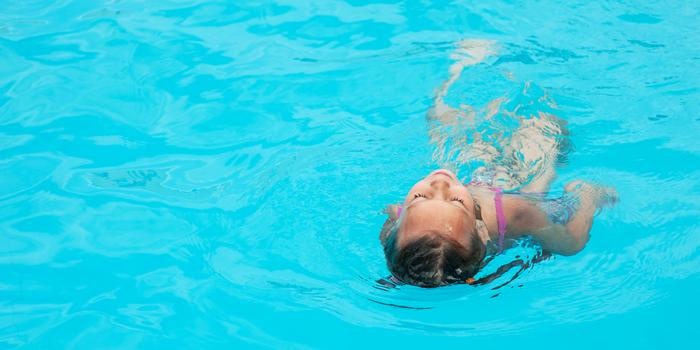 At present, due to the fact that the sea occupies a large place in the complex of therapeutic and prophylactic measures, a special department of climatology has been allocated, the so-called thalassotherapy, that is, treatment by the sea. How can one explain that the sea has medicinal properties?
At present, due to the fact that the sea occupies a large place in the complex of therapeutic and prophylactic measures, a special department of climatology has been allocated, the so-called thalassotherapy, that is, treatment by the sea. How can one explain that the sea has medicinal properties? It was already noted above that seawater in large quantities contains various salts (in particular, cations of sodium, potassium, magnesium, calcium, etc., and anions of chlorine, bromine, sulfate, etc.). In the process of bathing, these compounds are deposited on the human body and after going ashore turn into the smallest crystals. Salt crystals, as it turned out, irritate the receptors (nerve endings) of the skin, thereby contributing to a longer maintenance of the skin physiological reaction that occurs during bathing.
It was already noted above that seawater in large quantities contains various salts (in particular, cations of sodium, potassium, magnesium, calcium, etc., and anions of chlorine, bromine, sulfate, etc.). In the process of bathing, these compounds are deposited on the human body and after going ashore turn into the smallest crystals. Salt crystals, as it turned out, irritate the receptors (nerve endings) of the skin, thereby contributing to a longer maintenance of the skin physiological reaction that occurs during bathing.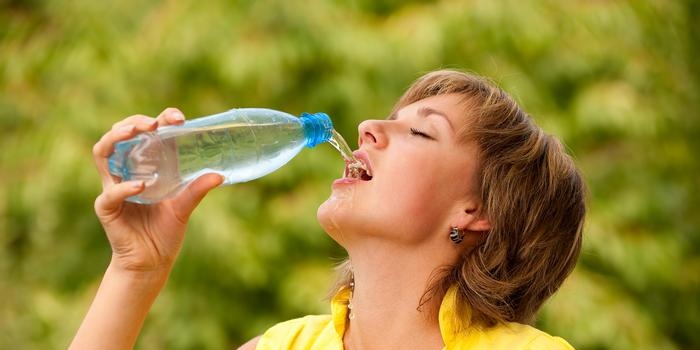 An important natural healing factor is the waters of the so-called mineral springs. There are many such sources on the globe. There are many of them in the former Russia. Our Caucasus is the richest in mineral springs. Such waters as Slavyanovskaya, Essentuki, Narzan are world famous.
An important natural healing factor is the waters of the so-called mineral springs. There are many such sources on the globe. There are many of them in the former Russia. Our Caucasus is the richest in mineral springs. Such waters as Slavyanovskaya, Essentuki, Narzan are world famous.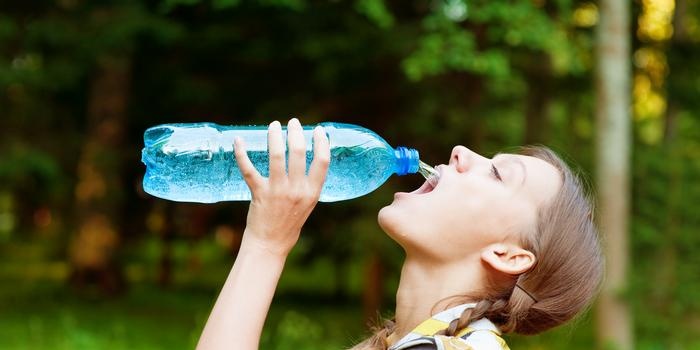 And yet, the main effect of carbon dioxide baths is, perhaps, chemical and biological.
And yet, the main effect of carbon dioxide baths is, perhaps, chemical and biological. And yet the most interesting thing is the effect of carbonic waters when taken orally.
And yet the most interesting thing is the effect of carbonic waters when taken orally. It is not necessary, of course, to think that mineral waters are omnipotent. Naturally, with their help it is much easier to carry out the prevention of diseases than their treatment. In addition, they have their own "enemies". For example, Academician I.P. Pavlov noted that alcohol and tobacco make it difficult or completely exclude the healing effect of mineral waters.
It is not necessary, of course, to think that mineral waters are omnipotent. Naturally, with their help it is much easier to carry out the prevention of diseases than their treatment. In addition, they have their own "enemies". For example, Academician I.P. Pavlov noted that alcohol and tobacco make it difficult or completely exclude the healing effect of mineral waters. Talking about various water procedures, such as sea bathing, various kinds of baths, etc., one cannot ignore the baths - they are one of the types of water procedures.
Talking about various water procedures, such as sea bathing, various kinds of baths, etc., one cannot ignore the baths - they are one of the types of water procedures.









